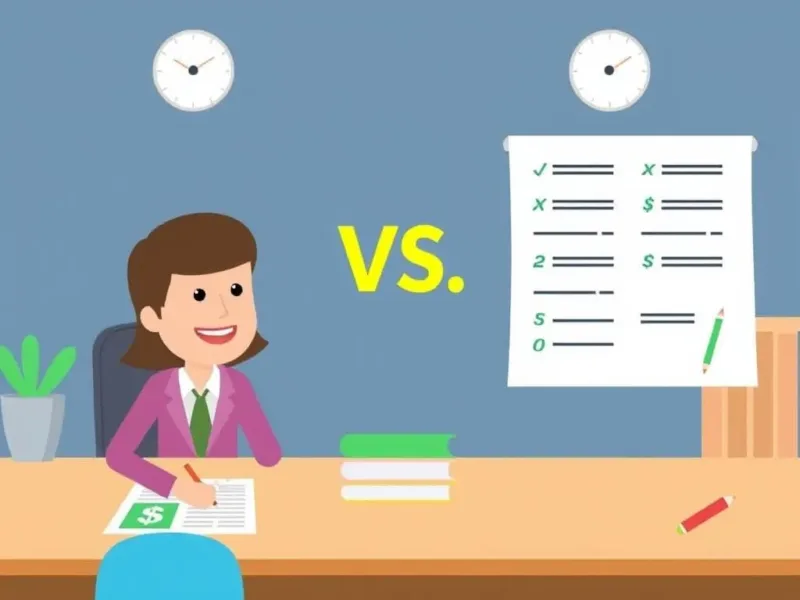Unlock the basics of accounting with our guide on debits vs credits. Discover how they work, why they matter, and learn to take control of your business finances confidently.
Accounting Debits vs Credits: A Guide to the Basics
Ever felt like accounting is a foreign language? Terms like debit and credit can sound intimidating, but they’re actually the building blocks of how businesses track their money. Think of them as the yin and yang of finance—two sides that always balance out. In this guide, we’ll demystify debits and credits, showing you how they work, why they matter, and how you can use them to take control of your business’s finances. Whether you’re a budding entrepreneur or just curious about the numbers, we’ve got you covered.
What Are Debits and Credits?
At the heart of accounting is a system called double-entry bookkeeping. It’s like a financial seesaw: for every transaction, there are at least two entries—one debit and one credit—that must balance each other out. This ensures that the books are always in harmony, with total debits equaling total credits.
- Debits (left side): Increase assets and expenses, decrease liabilities, equity, and revenue.
- Credits (right side): Increase liabilities, equity, and revenue, decrease assets and expenses.
Confusing? Let’s make it simple. Imagine your business buys a new laptop for $1,000 cash. You’re gaining an asset (the laptop) but losing another asset (cash). So, you debit the laptop account to show the increase and credit the cash account to show the decrease. Both sides balance, and your financial seesaw stays level.
A Quick History: Why Do We Use Debits and Credits?
Back in the 15th century, an Italian monk named Luca Pacioli had a lightbulb moment. He realized that recording every transaction twice—one entry for what’s received and one for what’s given—kept finances accurate and transparent. This double-entry bookkeeping system became the foundation of modern accounting, with debits and credits as its core. Fast forward to today, and we’re still using Pacioli’s genius idea to track everything from small business expenses to multinational corporate deals.
The Golden Rules: How Debits and Credits Work
Here’s the cheat sheet for how debits and credits affect different types of accounts:
| Account Type | Debit | Credit |
|---|---|---|
| Assets | Increase | Decrease |
| Expenses | Increase | Decrease |
| Liabilities | Decrease | Increase |
| Equity | Decrease | Increase |
| Revenue | Decrease | Increase |
Think of assets and expenses as the “spending” side—they grow with debits. Liabilities, equity, and revenue are the “earning” side—they grow with credits. It’s like a dance: one step forward, one step back, always in balance.
A Simple Example: Buying a Laptop
Let’s say your business buys a laptop for $1,000 cash. Here’s how it plays out:
- Debit (increase) the Office Equipment account (an asset) by $1,000.
- Credit (decrease) the Cash account (also an asset) by $1,000.
Both sides balance: you’ve gained one asset and lost another, but the total value stays the same. Easy, right?
Another Example: Selling a Product
Now, imagine you sell a product for $500 cash:
- Debit (increase) the Cash account by $500.
- Credit (increase) the Sales Revenue account by $500.
Here, your assets (cash) and revenue both go up, keeping the books balanced.
Why Do Debits and Credits Matter?
Debits and credits aren’t just about numbers—they’re about clarity. They help you:
- Track every dollar: Know exactly where your money’s coming from and where it’s going.
- Spot mistakes: If debits and credits don’t balance, something’s off.
- Make smart decisions: Understand your financial health to plan for growth or cut costs.
Without them, your finances would be a messy drawer of receipts—impossible to sort through.
Common Confusions (and How to Avoid Them)
Even pros trip up sometimes. Here are a few pitfalls to watch for:
- Mixing up expenses and revenues: Remember, expenses are debited (they cost you), revenues are credited (they earn you).
- Forgetting both sides: Every transaction needs a debit and a credit.
- Misclassifying accounts: Don’t debit a liability when you mean to debit an asset.
Pro tip: Take your time with entries. Accuracy beats speed every time.
Debits and Credits in Action: A Real-World Story
Meet Sarah, who runs a small bakery. One day, she buys $200 worth of flour on credit (meaning she’ll pay later). Here’s how she records it:
- Debit (increase) Inventory (asset) by $200.
- Credit (increase) Accounts Payable (liability) by $200.
Later, when she pays the supplier:
- Debit (decrease) Accounts Payable by $200.
- Credit (decrease) Cash by $200.
Sarah’s books stay balanced, and she can see exactly how much she owes and owns at any time.
The Role of Accounting Software
Today, tools like QuickBooks or Xero handle the heavy lifting, automatically recording debits and credits when you enter a transaction. But don’t let that fool you—understanding the basics is still crucial. If something goes wrong (like a misclassified expense), you’ll need to know how to fix it.
Why Mastering Debits and Credits Is Worth It
By now, you’ve got a solid grasp of debits vs credits—the dynamic duo of accounting. They’re not just abstract ideas; they’re tools that show you where your money’s coming from and where it’s going. With this knowledge, you’re better equipped to steer your business toward success. So, next time you look at a financial statement, you’ll know exactly what’s behind those numbers. Happy accounting!




Leave a Reply